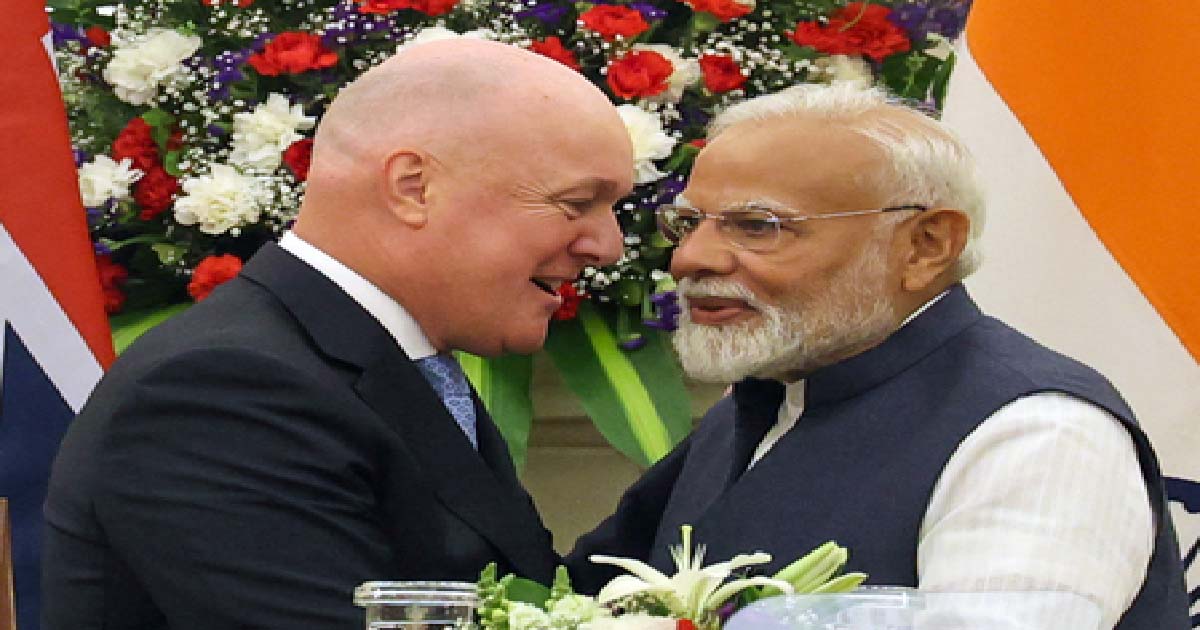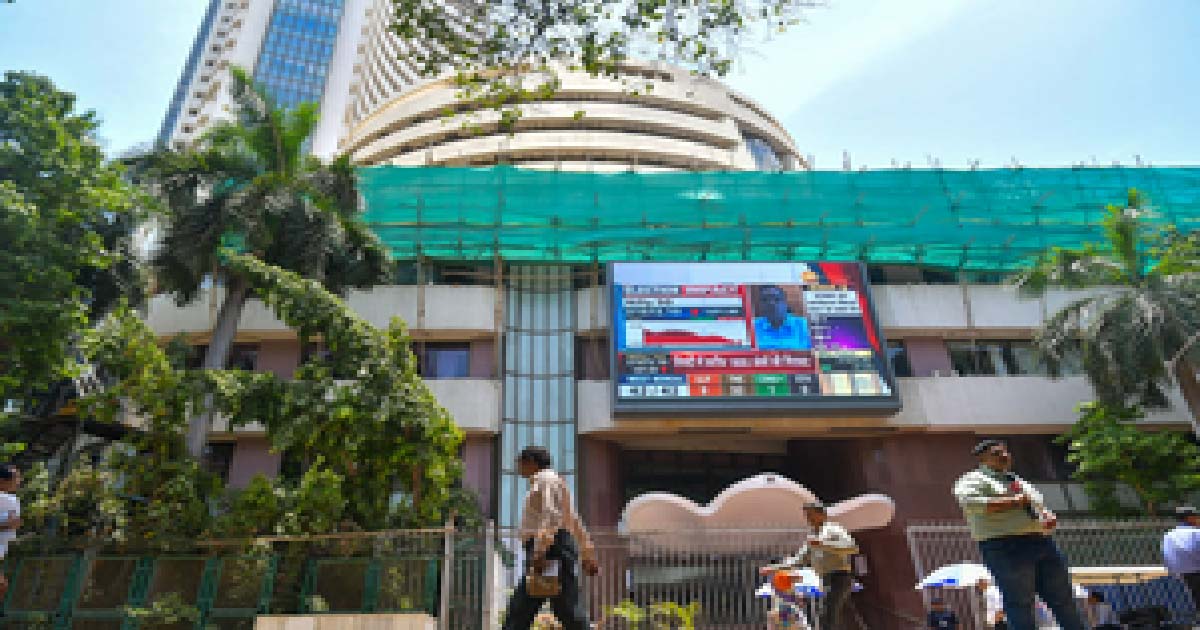Business
With debt of Rs 2.82L cr, incoming govt faces daunting task in Punjab
With a whopping public debt of Rs 2.82 lakh crore, the incoming government in one of the most fiscally stressed states, Punjab will be faced with the daunting task to usher in much-needed economic reforms as a major component of government earning and borrowing is meant for servicing debt rather than capital expenditure.
Twenty per cent of the annual budget is being spent only to pay the interest on the loans.
As per the latest findings of the Comptroller and Auditor General of India, the state’s financial crisis is set to worsen with the debt likely to reach Rs 3.73 lakh crore by 2024-25.
Government officials told IANS that the state’s debt has increased by Rs 1 lakh crore in the past five years under the current Congress government now led by Chief Minister Charanjit Singh Channi, largely owing to populism.
When this government took over the reins in 2017, it got the legacy of a Rs 2.08 lakh crore debt left by the decade-long rule of the Shiromani Akali Dal-BJP in the state.
An official familiar with the matter told IANS that political compulsions and populist announcements have been taking a huge toll on the state’s finances and this may surge the debt beyond the projected Rs 2.82 lakh crore.
Finance Minister Manpreet Badal in his last budget speech for this fiscal projected the total revenue receipts at Rs 95,257 crore. However, the state has never managed to achieve more than 80 per cent of its revenue target.
Also approximately 40 per cent of the state’s total estimated revenue receipts of Rs 95,257 crore for the current fiscal would go into debt servicing.
As per the budget estimates of an outlay of Rs 168,015 crore for 2021-22, the outstanding debt is likely to be Rs 273,703 crore in 2021-22, which is 45 per cent of the GSDP.
The total outstanding debt of the state as on March 31 is projected at Rs 252,880 crore, which is 42 per cent of the GSDP for 2020-21 and the outstanding debt is likely to be Rs 273,703 crore in 2021-22, which is 45 per cent of the GSDP.
Besides a major component of earnings and market borrowings go into debt servicing, the revenue goes into unproductive expenditure like disbursement of salaries, pensions and power subsidies for the farmers.
Also, say officials, the Covid-19 pandemic has caused a significant deterioration in public finances, adding to pre-existing strains. Also businesses in the state are reeling because of a sluggish economy and poor liquidity.
As per the recent memorandum by the state to the Centre for extending the Goods and Services Tax (GST) compensation, Punjab says being an agrarian economy it was deriving a significant portion of its revenue from the agriculture sector in the pre-GST era by imposition of tax on agricultural produce (mainly foodgrains).
This was realized in the form of the levy of Purchase Tax on agricultural produce at the rate of five per cent of the minimum support price (MSP) of produce collected from the purchaser of such produce.
In addition, an Infrastructure Development Fee at the rate of three per cent was also levied on purchase of foodgrains. The state collected Rs 3,094 crore in 2015-16 from the Purchase Tax and Infrastructure Development Fee alone, i.e. 16.55 per cent of its total tax revenue of Rs 18,692.89 crore during that year.
With the implementation of GST, both the Purchase Tax and Infrastructure Development Fee on foodgrains have been subsumed in the GST.
Since the GST is a destination-based tax and agricultural produce is largely exempted under it, Punjab has experienced a permanent loss of a significant portion of the state revenue.
However, the saving grace for the government is the first half of this fiscal with a hefty increase in revenue from the pre-Covid levels.
The GST revenue comprising state goods and services tax (SGST) and integrated goods and services tax from April to September of 2021 was Rs 7,851 crore, which is 67.55 per cent more than in the corresponding period of 2020, and 54 per cent more than in the pre-pandemic year of 2019-20.
But the area of concern for authorities now is ending GST compensation from the Centre on June 30, unless it is extended by the GST Council, leaving the state to fend for itself thereafter.
A report by the Group of Experts (GOE) led by noted economist Montek Singh Ahluwalia, set up by Chief Minister Amarinder Singh to revive Punjab’s economy, recommended measures like reducing average cost of government debt, banning recruitment in police and bringing pay scales of government employees on par, among others.
The panel in its report to aid medium and long-term revival strategy was categorically clear that unless measures are taken to correct the fiscal situation over the next few years, it will not be possible to achieve the objective of restoring Punjab to its pre-eminent position.
The experts suggested rationalisation of power subsidies given to farmers that is 1.9 per cent of its GDP and grew from Rs 5,670 crore in 2019-20 to Rs 7,180 in 2020-21.
Ahead of the polling for the Assembly elections on February 20, the opposition Aam Aadmi Party (AAP) had accused the previous Akali-BJP and current Congress government of plunging Punjab into debt.
“With the population of 3 crore, today every individual in Punjab has a debt of Rs 1 lakh. Every child who is born in Punjab already has a debt of 1 lakh rupees on them right after their birth,” AAP leader Raghav Chadha told the media.
SAD President Sukhbir Badal, the man known for micro poll management for his now own controlled century old party with the focus on farmers’ interests and justice for them, said Punjab and Punjabis are in a crisis.
“The Congress government did nothing for five years. It reneged on each and every promise made to the people be it complete farm loan waiver, Rs 2,500 per month unemployment allowance, jobs for each household and increase in social welfare benefits.
“It also stalled all development work but simultaneously presided over a sand and liquor mafia and looted the state exchequer. It was due to this that the state’s debt has increased by Rs 1 lakh crore in the last five years alone.”
All the parties were banking on freebies to woo the electorate.
The AAP has promised Rs 1,000 for all women, while the Congress has assured Rs 1,100 per month for needy women. The SAD-BSP alliance has promised Rs 2,000 per month to all women heads of BPL families.
Two-time Chief Minister and former Congress leader Amarinder Singh in his election campaignin stressed Punjab “needs the Centre’s support for its economic revival, which his party, the Punjab Lok Congress, in alliance with the BJP would help achieve.”
The state has no money for development, which will remain a far cry under the false promises of parties like the Congress, AAP and SAD, who were not willing to work in coordination with the Centre, he stressed.
Business
India-New Zealand FTA: PM Modi, Luxon aim to double bilateral trade over 5 years

New Delhi, Dec 22: Prime Minister Narendra Modi held a telephone conversation with New Zealand’s Prime Minister, Christopher Luxon, on Monday as the two leaders jointly announced the successful conclusion of the historic, ambitious and mutually beneficial India-New Zealand Free Trade Agreement (FTA).
During the conversation, both leaders expressed confidence in doubling bilateral trade over the next five years as well as an investment of $20 billion in India from New Zealand over the next 15 years.
The negotiations began in March this year and the two leaders concluded the FTA in a record time of nine months, reflecting the shared ambition and political will to further deepen ties between the two countries, according to a statement from Prime Minister’s Office (PMO).
“The FTA would significantly deepen bilateral economic engagement, enhance market access, promote investment flows, strengthen strategic cooperation between the two countries, and also open up new opportunities for innovators, entrepreneurs, farmers, MSMEs, students and youth of both countries across various sectors,” said the statement.
The leaders also welcomed the progress achieved in other areas of bilateral cooperation such as sports, education, and people-to-people ties, and reaffirmed their commitment towards further strengthening of the India-New Zealand partnership.
This historic FTA eliminates and reduces tariffs on 95 per cent of New Zealand’s exports – among the highest of any Indian FTA – with almost 57 per cent being duty-free from day one, increasing to 82 per cent when fully implemented, with the remaining 13 per cent subject to sharp tariff cuts.
It puts New Zealand exporters on an equal or better footing to our competitors across a range of sectors and opens the door to India’s rapidly expanding middle class, according to an official statement from New Zealand.
“The Indian economy is forecast to grow to NZ$12 trillion by 2030. The India-NZ Free Trade Agreement unleashes huge potential for our world-class exporters to the world’s largest country and will significantly accelerate progress towards New Zealand’s ambitious goal of doubling the value of exports over 10 years,” it added.
Business
Mumbai-Bound Air India Flight Returns To Delhi Airport Minutes After Take Off Due To Technical Glitch

New Delhi: A Mumbai-bound Air India flight AI887 returned to the Delhi Airport minutes after take-off due to a technical issue. The Delhi–Mumbai flight made an emergency landing according to standard operating procedure.
As perv an Air India spokesperson, the aircraft (Boeing 777) landed safely at Delhi, and the passengers and crew disembarked.
The Boeing 777 suffered an engine issue soon after take-off, reported The Times of India. The aircraft reportedly took off at 6.10 am and returned to the airport at 6.52 am. The aircraft is currently undergoing necessary checks.
As per the report, the airline arranged another B777 (VT-ALP) for passengers and even provided refreshments for them.
On Sunday, over 100 flights were cancelled from the Delhi Airport due to dense fog conditions in the national capital. Meanwhile, more than 400 flights were also delayed at the airport.
Over the past few days, most parts of the nothern and northwestern regions of the country are witnessing dense fog condition.
“Dense to very dense fog conditions during night/morning hours very likely in some parts of Uttarakhand, Uttar Pradesh, Haryana till morning hours of 21st; in isolated pockets of Punjab, Haryana during 25th-27,” the India Meteorological Department (IMD) had said in its press statement on Sunday.
On Friday also, an Air India flight travelling from Mumbai to Varanasi was forced to make an emergency diversion to Bhubaneswar after deteriorating weather conditions made landing at the destination airport unsafe. The aircraft landed at Biju Patnaik International Airport (BPIA) as a precautionary measure, airline officials confirmed.
Business
Sensex, Nifty open in green zone amid positive global cues

Mumbai, Dec 22: Indian benchmark indices opened in green zone on Monday, breaking the last week’s trend of edging lower, amid strong buying in the US and China markets.
As of 9.30 am, the Sensex advanced 507 points, or 0.60 per cent, at 84,436 and the Nifty added 165 points, or 0.64 per cent to 26,132.
The broad cap indices performed in line with the benchmarks, with the Nifty Midcap 100 up 0.58 per cent and the Nifty Smallcap 100 adding 0.51 per cent.
Hindalco, Tech Mahindra and TCS were among the major gainers in the Nifty Pack, while losers included Asian Paints, Bajaj Finance, Max Healthcare and Cipla.
All the sectoral indices on NSE were trading in the green with metal, IT and media being the major gainers — up around 1.48, 1.23 and 0.77 per cent, respectively.
Analysts noted that market is likely heading for a year-end rally. The rupee’s sharp reversal and FIIs’ cash market purchases can accelerate this rally, as they lead to short covering, pushing benchmark indices higher. The Goldilocks domestic economic set up and potential earnings growth uptrend can support a market upturn, they added.
The US markets ended mostly in the green zone on the last trading day, as Nasdaq advanced 1.31 per cent, the S&P 500 edged up 0.88 per cent, and the Dow moved up 0.38 per cent.
As investors parsed China’s central bank keeping loan prime rate steady, Asia-Pacific markets rose on Monday.
The People’s Bank of China maintained its 1-year and 5-year loan prime rates steady, which affects most new and outstanding loans and mortgages.
In Asian markets, China’s Shanghai index advanced 0.64 per cent, and Shenzhen dropped 1.36 per cent, Japan’s Nikkei edged up 1.75 per cent, while Hong Kong’s Hang Seng Index added 0.29 per cent. South Korea’s Kospi added 1.72 per cent.
On Friday, foreign institutional investors (FIIs) sold equities worth Rs 2,387 crore, while domestic institutional investors (DIIs) were net buyers of equities worth Rs 5,200 crore.
-

 Crime3 years ago
Crime3 years agoClass 10 student jumps to death in Jaipur
-

 Maharashtra1 year ago
Maharashtra1 year agoMumbai Local Train Update: Central Railway’s New Timetable Comes Into Effect; Check Full List Of Revised Timings & Stations
-

 Maharashtra1 year ago
Maharashtra1 year agoMumbai To Go Toll-Free Tonight! Maharashtra Govt Announces Complete Toll Waiver For Light Motor Vehicles At All 5 Entry Points Of City
-

 Maharashtra1 year ago
Maharashtra1 year agoFalse photo of Imtiaz Jaleel’s rally, exposing the fooling conspiracy
-

 National News1 year ago
National News1 year agoMinistry of Railways rolls out Special Drive 4.0 with focus on digitisation, cleanliness, inclusiveness and grievance redressal
-

 Maharashtra1 year ago
Maharashtra1 year agoMaharashtra Elections 2024: Mumbai Metro & BEST Services Extended Till Midnight On Voting Day
-

 National News1 year ago
National News1 year agoJ&K: 4 Jawans Killed, 28 Injured After Bus Carrying BSF Personnel For Poll Duty Falls Into Gorge In Budgam; Terrifying Visuals Surface
-

 Crime1 year ago
Crime1 year agoBaba Siddique Murder: Mumbai Police Unable To Get Lawrence Bishnoi Custody Due To Home Ministry Order, Says Report












